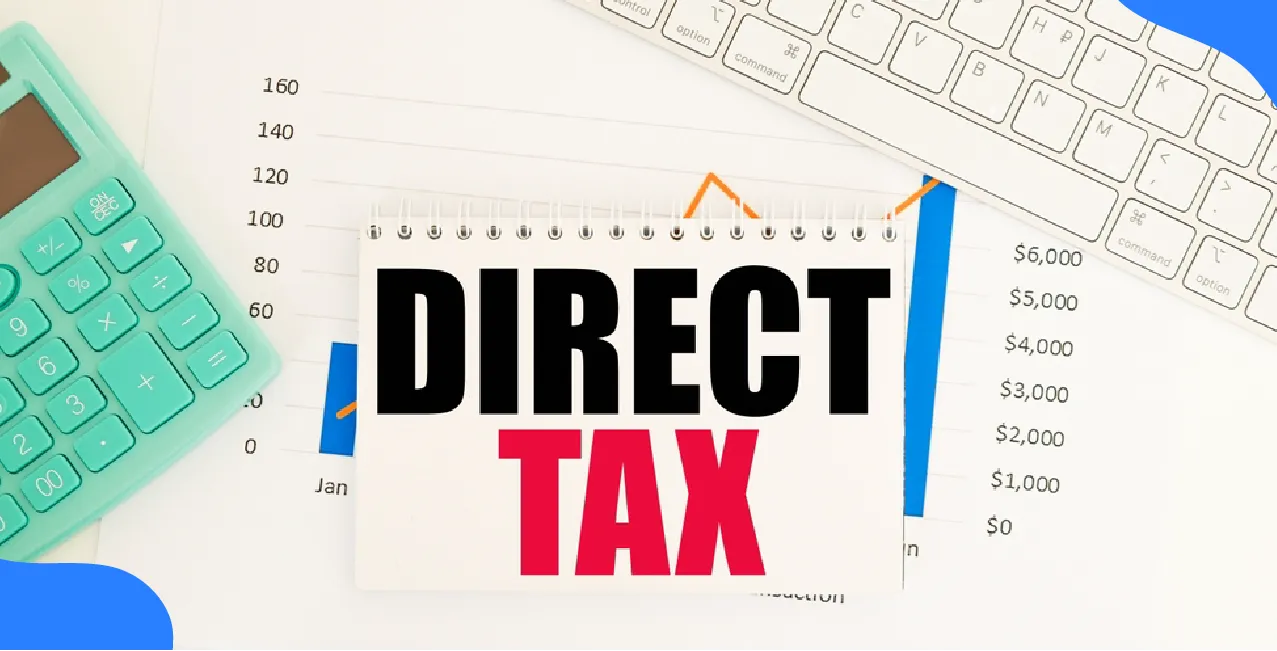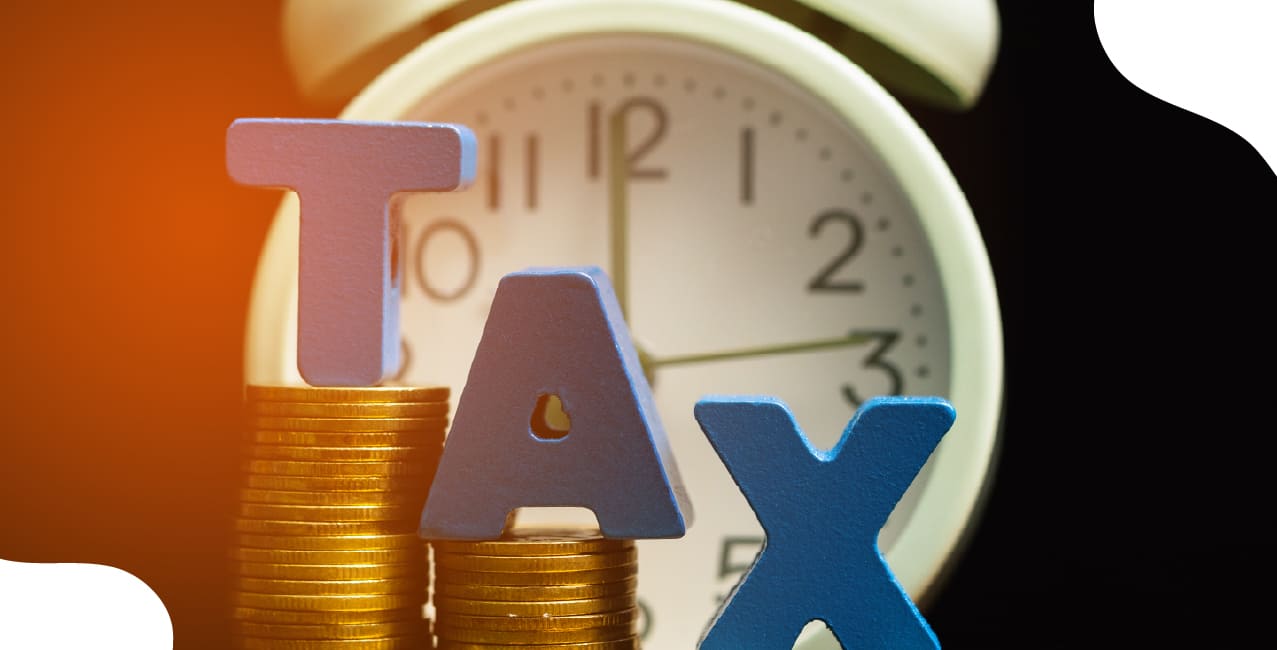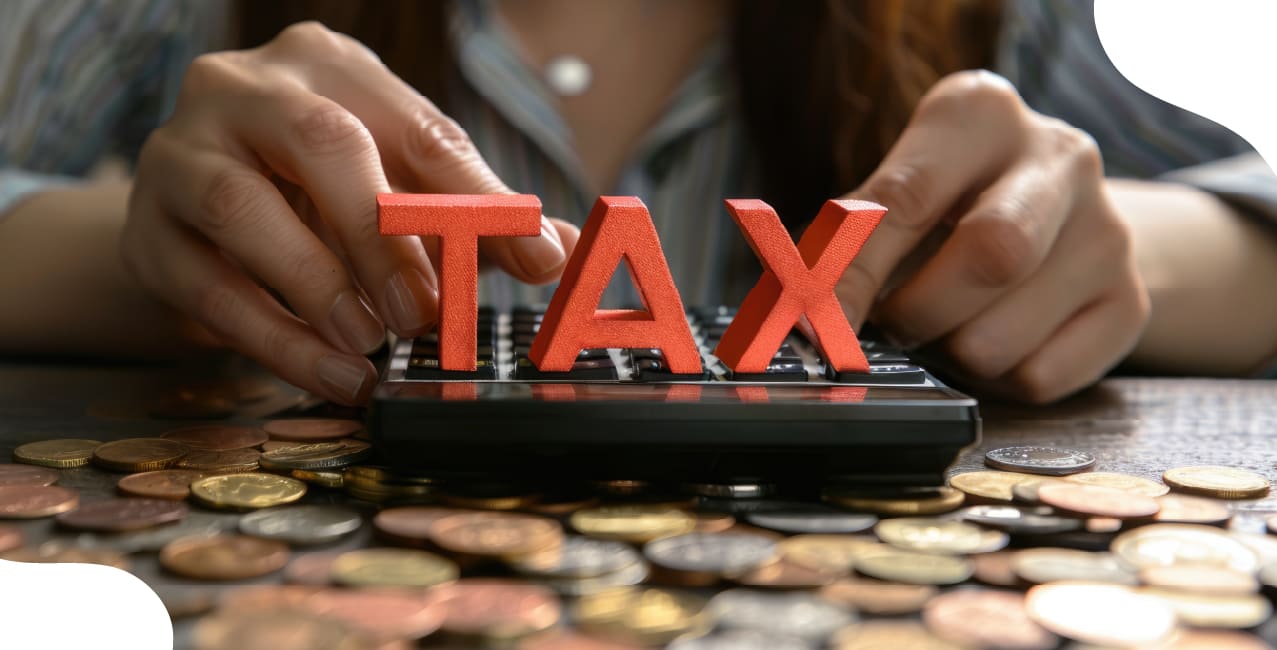
Author
LoansJagat Team
Read Time
6 Min
07 Aug 2025
What is Direct Tax? Meaning, Types & Indian Tax Examples
A direct tax is a levy placed directly on an individual's or entity’s income, wealth, or property, paid directly by the person or business it affects. In India, these are administered by the Central Board of Direct Taxes (CBDT).
Gunjan Babu’s Direct Tax Tale
Gunjan Babu works at Wipro and earns ₹2,000,000 a year. After deducting ₹150,000 under Section 80C and ₹50,000 under Section 80D, his taxable income becomes ₹1,800,000.
According to the Indian income tax slabs, Gunjan’s tax is calculated as follows:
- 5% on income between ₹250,001 and ₹500,000
- 20% on income between ₹500,001 and ₹1,000,000
- 30% on income above ₹1,000,000
His total income tax comes to ₹352,500. Then, a health and education cess of 4% is added, which amounts to ₹14,100.
So, the total direct tax Gunjan must pay is ₹366,600. There is no surcharge because his income is below ₹5,000,000. This tax is paid directly by Gunjan to the government.
Key Features of Direct Taxes
1. Incidence and Impact
A direct tax sits where it's supposed to, with the taxpayer. No one else can shift this burden. If you earn, you pay. The one who earns the income is the one who bears the cost
Example: Priya earns ₹10,00,000 annually. She alone is responsible for paying income tax on this amount. She cannot shift this tax to her employer or anyone else. If her tax liability is ₹1,17,000 (as per the slab), she must pay it herself.
2. Progressive Structure
Direct taxes follow a progressive pattern. As your income rises, so does your tax rate. Higher earners contribute a larger share, making the system fairer.
Example:
- Ramesh earns ₹5,00,000 a year; he pays roughly ₹12,500 in tax.
- Suresh earns ₹15,00,000; he pays around ₹2,62,500 in tax.
Here, Suresh pays a higher tax rate than Ramesh because he falls into a higher income slab.
3. Direct Payment
You pay this tax straight to the government, no middleman. Whether it's income tax or capital gains tax, the amount goes from your pocket directly to the tax authorities.
Example: Meera earns ₹12,00,000 annually. Her employer deducts ₹1,65,000 as tax at source (TDS) and deposits it directly into the government's account on her behalf. Meera gets credit for it when she files her return.
Types of Direct Taxes in India
In India, these are the main types of direct taxes that individuals and companies pay directly to the government:
Notes:
- HUF: Hindu Undivided Family, a family recognised as a single tax entity.
- LLP: Limited Liability Partnership, a business type with partnership and company features.
- Book profits: Profits shown in company accounts, which may differ from taxable profits.
- Black money: Unreported or illegal income.
These taxes form the backbone of India’s direct tax system and are managed by the Central Board of Direct Taxes (CBDT) under the Income Tax Act, 1961.
How do Direct Taxes Work in India? Examples & Scenarios
Understanding how direct taxes apply in everyday situations helps individuals and businesses make informed financial choices. Here’s a quick look at how key direct taxes work in India:
This table shows how direct taxes directly impact different income types, transactions, and businesses in India’s tax system.
Benefits & Criticisms of Direct Taxes
Advantages
- Promotes equity through progressivity: Direct taxes follow a slab system; people who earn more pay more. This helps reduce income gaps.
Example: Meena, who earns ₹20,00,000 a year, pays a higher tax rate than Aman, who earns ₹5,00,000.
- Provides stable government revenue: Income tax gives the government a regular source of income. This helps fund schools, roads, hospitals, and other public services.
Example: Even during an economic slowdown, the government still receives income tax from salaried employees.
- Improves transparency: People know exactly how much tax they are paying. There's no hidden cost since tax is paid directly by the person.
Example: Shahid sees the tax deducted from his salary every month on his payslip, so everything is clear.
Criticisms
- High compliance and paperwork: Filing tax returns can be confusing, especially with frequent rule changes and forms. People often need help from professionals.
Example: A freelance writer spends ₹20,000 every year on a tax consultant to file their return properly.
- Narrow tax base: Only a small part of the population pays income tax. This limits how much the government can collect.
Example: Many small traders and informal workers earn income but are not required to file tax returns.
- Can discourage higher earnings: As income rises, people may pay more tax, which can make extra effort feel less rewarding.
Example: Raj considers turning down a job promotion, as the higher salary would push him into a 30% tax bracket and reduce his take-home pay.
These advantages and drawbacks highlight the balancing act in India’s direct tax policy, promoting fairness and stability while simplifying rules and broadening the tax base.
Conclusion
Direct tax is the money you pay directly to the government on what you earn, own, or gain, like salary, business income, or property profit. It’s a key part of how the country funds public services such as schools, hospitals, and roads. While it promotes fairness, it also comes with challenges like paperwork and limited coverage.
FAQs
Q. Can I avoid direct tax by using only cash?
No. The government tracks income from all legal sources, whether you’re paid by bank or cash. Avoiding tax is illegal and considered tax evasion.
Q. What happens if I don’t file my income tax return?
If you don’t file on time, you may face late fees, lose tax refunds, and even get notices from the Income Tax Department. In some cases, it could lead to penalties or legal action.
Q. How can direct tax help the country grow?
Your tax helps build better roads, schools, health services, and even supports defence and national safety. It’s a big part of how the government runs the country and invests in the future.
Q. Can paying direct tax actually benefit me personally?
Yes, it can. Filing taxes builds your financial record, which helps when applying for loans, visas, or government schemes. It also shows you're a responsible citizen, plus, you may get refunds or future benefits based on your tax history.
Other Informative Pages | |||
About the Author

LoansJagat Team
‘Simplify Finance for Everyone.’ This is the common goal of our team, as we try to explain any topic with relatable examples. From personal to business finance, managing EMIs to becoming debt-free, we do extensive research on each and every parameter, so you don’t have to. Scroll up and have a look at what 15+ years of experience in the BFSI sector looks like.

Quick Apply Loan
Subscribe Now
Related Blog Post

LoansJagat Team • 22 Sep 2025
_of_Income_Tax_Act.jpg)
LoansJagat Team • 22 Sep 2025

LoansJagat Team • 22 Sep 2025